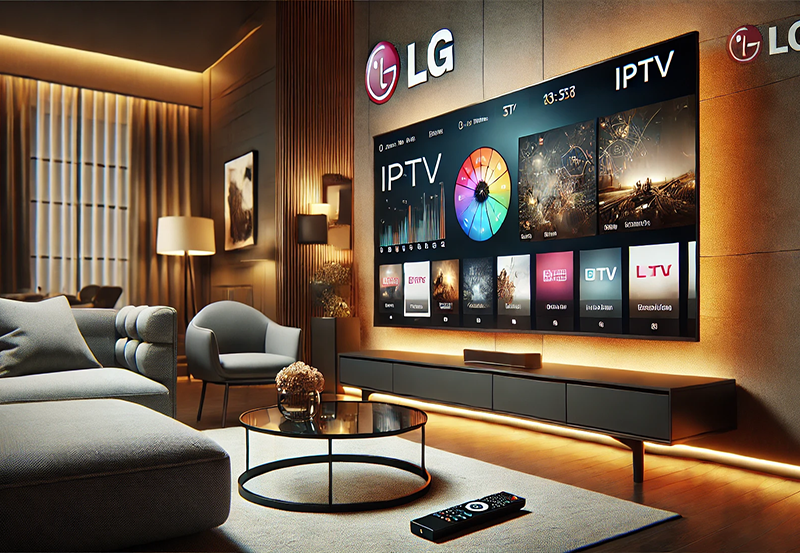In this detailed guide, we’ll begin by discussing why you might want to install Kodi on a Smart TV, especially for IPTV streaming. Next, we’ll walk through the steps to install Kodi on different types of Smart TVs, including those that do not support Android operating systems. We will also explore other applications that can be used to enjoy IPTV on Smart TVs. By the end of this article, you’ll have a comprehensive understanding of how to get Kodi working on your Smart TV, even if it doesn’t officially support the app.
Why Install Kodi on a Smart TV?
Kodi is a versatile and highly customizable media player that supports a wide range of streaming services, including IPTV. It allows users to stream live TV channels, on-demand movies, TV shows, and much more, all in one place. With Kodi’s extensive range of third-party add-ons, it’s particularly appealing to users who want a centralized hub for their IPTV content.
However, Kodi is not natively available on all Smart TVs. The operating system of your TV can affect how (or if) you can install Kodi. While Android-based Smart TVs support Kodi installations fairly easily, other operating systems might require additional steps or alternative methods to enjoy Kodi’s full features.
Other Applications for IPTV on Smart TVs
Although Kodi is a powerful option for IPTV streaming, it’s not the only solution. Many users may find other IPTV apps easier to set up or more compatible with their Smart TV’s operating system. Some popular IPTV apps include:
- IPTV Smarters
- Smart STB
- SIPTV (Smart IPTV)
- SS IPTV
These apps are often easier to install directly from the Smart TV’s app store and don’t require third-party repositories or sideloading, making them viable alternatives to Kodi for IPTV streaming.
How to Install IPTV on Kodi?
If you’re a fan of Kodi and want to use it for IPTV, you’ll need to install third-party add-ons that enable IPTV streaming. These add-ons must be downloaded from third-party repositories, as they are not included in the official Kodi repository due to various legal restrictions.
Is There an Official Kodi App for Smart TVs?

The short answer is no—Kodi does not have an official app available on all Smart TV platforms. However, many Smart TVs run on an Android-based operating system, which makes it possible to install the Kodi Android app directly from the Google Play Store or by sideloading the APK file. For Smart TVs that don’t support Android, alternative methods such as using external devices or casting Kodi from another device can still provide access to Kodi’s features.
Installing Kodi on Smart TVs
Let’s break down how to install Kodi on Smart TVs depending on whether or not they have access to the Google Play Store.
Smart TVs with Access to Google Play Store
If your Smart TV supports Android and has access to the Google Play Store, installing Kodi is a straightforward process. Here’s how you can do it:
- Go to the Google Play Store: Navigate to the Play Store app on your Smart TV.
- Search for Kodi: Use the search function to type “Kodi” and press enter on your remote.
- Install Kodi: Once you find Kodi in the search results, click on “Install.” The download size is less than 90 MB, so it should complete quickly.
- Open Kodi: After installation, Kodi will appear in your Apps section, and you can start adding IPTV channels via third-party add-ons.
That’s it! Your Kodi app is now installed on your Smart TV and ready to use for IPTV streaming.
Smart TVs Without Access to Google Play Store
If your Smart TV does not have access to the Google Play Store, the installation process becomes a bit more complicated. However, it’s still possible to install Kodi using a method called sideloading. Follow these steps:
- Download the Kodi APK: Go to the official Kodi website at https://kodi.tv/download and download the Android version of the Kodi app (APK file) that is compatible with your TV’s hardware specifications.
- Transfer the APK File: Save the APK file onto a flash drive or memory stick and insert it into the USB port on your Smart TV.
- Enable Installation from Unknown Sources: On your Smart TV, go to Settings > Security and enable Unknown Sources to allow installations from third-party sources.
- Install the APK: Use your Smart TV’s File Manager to locate the APK file on the flash drive. Select the file and follow the prompts to install Kodi.
- Launch Kodi: Once installed, you can find Kodi in your apps section and start setting it up for IPTV streaming.
What If Your Smart TV Doesn’t Support Android?
If your Smart TV doesn’t run on Android, it won’t be possible to install Kodi directly onto the TV. However, there are still several ways you can enjoy Kodi and IPTV on your TV:
1. Using an Android-based Kodi Box
One of the best options for non-Android Smart TVs is to use an external Kodi box. These devices are usually powered by Android and offer seamless Kodi integration. Simply connect the Kodi box to your TV via HDMI, install Kodi, and enjoy all the features.
Popular Kodi boxes include:
- Nvidia Shield TV
- Amazon Fire TV
- Roku (with casting features)
2. Run Kodi on a PC and Cast to Your TV
Another alternative is to run Kodi on a PC or laptop and then cast the video output to your TV. Many Smart TVs support casting or screen mirroring from external devices, allowing you to view the Kodi stream on your TV without installing Kodi directly.
Screencasting Kodi from Other Devices
For TVs that do not support Android or where installing Kodi is too complicated, you can use screencasting to stream Kodi from a computer or smartphone to your Smart TV. Here’s how:
- Run Kodi on your PC or Android device: Open the Kodi app on your device.
- Enable Casting or Screen Mirroring on Your TV: Most Smart TVs have a built-in feature for casting or screen mirroring. Check your TV’s user manual to find the specific settings (often labeled as Screen Mirroring or Casting).
- Start Screencasting: On your PC or Android device, open the Cast or Mirroring function and select your Smart TV. Once connected, the content from Kodi will stream directly to your TV.
TV Setup Box vs. Screencasting
While both screencasting and using a Kodi setup box are effective ways to stream IPTV through Kodi, there are some key differences:
- Kodi Box: Provides a more robust and dedicated solution for running Kodi on non-Android TVs.
- Screencasting: More flexible, as it doesn’t require additional hardware, but performance may vary depending on the strength of your Wi-Fi network.
Final Thoughts
Kodi can be an excellent tool for IPTV streaming, even on Smart TVs that don’t directly support it. Whether you have an Android-based Smart TV, a non-Android model, or are using an external device like a Kodi box, there are plenty of options to get Kodi up and running.
In this article, we’ve explored multiple methods for installing and using Kodi on Smart TVs, from direct installations to sideloading, and even screencasting from other devices. If you know of additional methods to enjoy Kodi and IPTV on Smart TVs, feel free to share your suggestions in the comments below. Happy streaming!
How to Deal with IPTV Compatibility Issues on Different Devices





